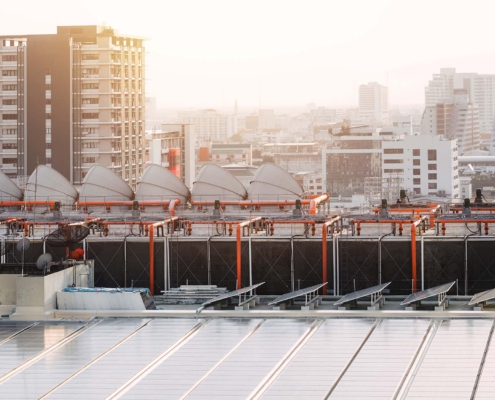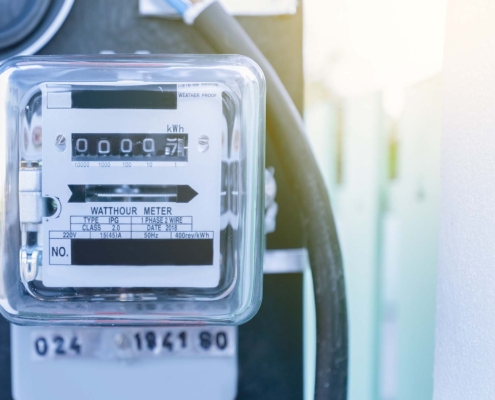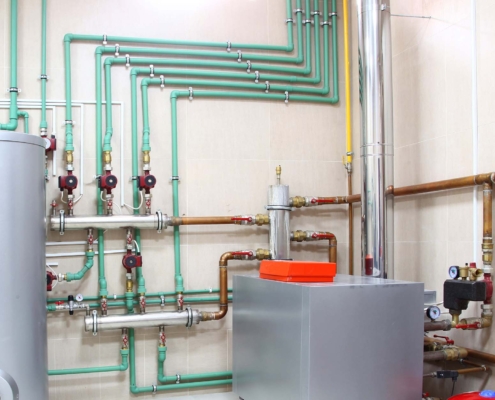 https://www.aircomfort.com/wp-content/uploads/2022/10/What-Is-IECC-and-How-Does-It-Affect-Your-Business__.jpg
1250
2000
Ike Oji
/wp-content/uploads/2021/08/AC_Logo_FIN_-wTag.png
Ike Oji2022-10-31 09:00:002023-04-27 15:24:16What is the IECC?
https://www.aircomfort.com/wp-content/uploads/2022/10/What-Is-IECC-and-How-Does-It-Affect-Your-Business__.jpg
1250
2000
Ike Oji
/wp-content/uploads/2021/08/AC_Logo_FIN_-wTag.png
Ike Oji2022-10-31 09:00:002023-04-27 15:24:16What is the IECC?Base Building Systems Best Practices
Commercial HVAC systems are vastly different from the units you have at home. Often overlooked, your HVAC infrastructure is one of the most critical mechanical business systems for day-to-day operations. In this post, we’ll take a look at some of the fundamental commercial HVAC components many systems use—and what they do.
Common Commercial HVAC Components
Commercial HVAC systems depend on a variety of interconnected components to control your facility’s climate. These large-scale systems most commonly depend on:
Heat Pumps
Heat pumps extract heat from air or water for heating. Pipes carry water through your structure to supply a heat pump. When it’s cool outside, a heat pump extracts heat from the air or uses electricity to heat water and transfer it inside. When it’s warm outside, it reverses direction and acts as an air conditioner by removing heat from the air.
Rooftop Units
Rooftop units are one of the most common components of a commercial HVAC system. Due to their large size, they’re generally found on roofs but can also be placed on the ground. They work by distributing cold air throughout your facility via air ducts and vents.
Chillers
Chillers work similarly to heat pumps; however, they produce cooled water that’s distributed to air cooling coils through a piping system. From there, cool air can be distributed throughout your building.
Heaters
There are two primary types of heaters: hot air furnaces and radiant heaters. Hot air furnaces work by burning fuel to heat the air. Radiant heaters, on the other hand, use invisible infrared radiation to heat objects directly.
How Commercial HVAC Systems Work
To produce cold air, commercial HVAC systems work by:
- Compressing refrigerant
- Drawing in warm outside air
- Blowing warm air over compressed refrigerant vapor
- Using an expanding chamber to transform refrigerant into a liquid
- Delivering cool air via ducts and vents
To produce warm air, commercial HVAC systems work similarly, but use an energy source to produce warm air instead of refrigerant to compress cool air.
Where to Start
As you begin developing an HVAC solution for your facility, you should answer some essential questions first. They include:
- What energy source do you want to use for heating? Electricity, oil, gas, solar, or thermal?
- How do you want to generate cool air? Using a chiller, gas air conditioner, or electric air conditioner?
- How do you want to deliver warmth or heat throughout your building? Air ducts or via a water system?
- What are your energy efficiency goals?
Once you have solid answers to these questions, you’re ready to begin working with an HVAC partner to turn your ideas into a concrete solution.
Not Sure Where to Turn Next?
If you’re in need of a reliable HVAC partner to design and build a system for your facility, get in touch with the experts at Air Comfort today. As Chicagoland’s premier commercial HVAC provider, we’ll work with you to clarify your options and develop a solution that makes the most sense for your budget while minimizing overhead costs.
Related Postings
 https://www.aircomfort.com/wp-content/uploads/2022/10/What-Is-IECC-and-How-Does-It-Affect-Your-Business__.jpg
1250
2000
Ike Oji
/wp-content/uploads/2021/08/AC_Logo_FIN_-wTag.png
Ike Oji2022-10-31 09:00:002023-04-27 15:24:16What is the IECC?
https://www.aircomfort.com/wp-content/uploads/2022/10/What-Is-IECC-and-How-Does-It-Affect-Your-Business__.jpg
1250
2000
Ike Oji
/wp-content/uploads/2021/08/AC_Logo_FIN_-wTag.png
Ike Oji2022-10-31 09:00:002023-04-27 15:24:16What is the IECC? https://www.aircomfort.com/wp-content/uploads/2022/09/Electrical-equipment.energy-meter-is-a-device-that-measures-the-amount-of-electric-energy-consumed-by-a-residence.jpg
1250
2000
Valeriia Mamleeva
/wp-content/uploads/2021/08/AC_Logo_FIN_-wTag.png
Valeriia Mamleeva2022-09-22 09:00:052023-04-27 15:24:16How To Reduce Energy Use in Commercial Buildings
https://www.aircomfort.com/wp-content/uploads/2022/09/Electrical-equipment.energy-meter-is-a-device-that-measures-the-amount-of-electric-energy-consumed-by-a-residence.jpg
1250
2000
Valeriia Mamleeva
/wp-content/uploads/2021/08/AC_Logo_FIN_-wTag.png
Valeriia Mamleeva2022-09-22 09:00:052023-04-27 15:24:16How To Reduce Energy Use in Commercial Buildings https://www.aircomfort.com/wp-content/uploads/2022/09/boiler-room_.jpg
1250
2000
Valeriia Mamleeva
/wp-content/uploads/2021/08/AC_Logo_FIN_-wTag.png
Valeriia Mamleeva2022-09-15 09:00:372023-04-27 15:24:16How To Identify Common Boiler Problems
https://www.aircomfort.com/wp-content/uploads/2022/09/boiler-room_.jpg
1250
2000
Valeriia Mamleeva
/wp-content/uploads/2021/08/AC_Logo_FIN_-wTag.png
Valeriia Mamleeva2022-09-15 09:00:372023-04-27 15:24:16How To Identify Common Boiler Problems

About
Air Comfort’s mission is to work closely with customers to provide a true “comfort level” for their businesses, with uninterrupted performance and round-the-clock reliability.


